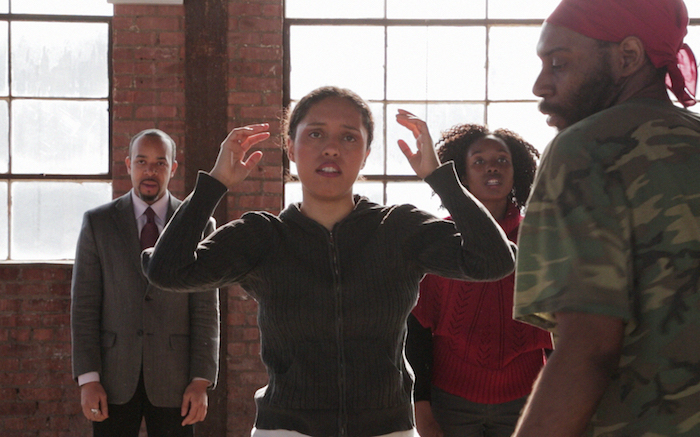
“The 1870’s-era Cracker-style farmhouse was owned by author Marjorie Kinnan Rawlings, who wrote “The Yearling” here, which won the Pulitzer Prize in 1938. Volunteers, dressed as characters from “The Yearling,” show visitors gardening techniques and produce from the time of the novel. The house, garden, and grove are operated as a living museum today by the Florida Park Service.”
It doesn’t matter if it’s a sticky 100 degrees in Cross Creek, Florida; there’s work to do at the 1870s-era farmhouse. The heart pine walls need to be repainted. The cast iron stove and pots need to be seasoned. The garden, lying fallow through the summer heat, needs to be planted for fall.
Author Marjorie Kinnan Rawlings’ farmhouse, garden and orange grove are operated as a living museum by the Florida Park Service to showcase the food, architecture and traditions of Rawlings’ proud and self-reliant neighbors, known as “Florida Crackers.” They were the first to settle in Florida when it became a state; she was the first to tell their story, winning the 1938 Pulitzer Prize for “The Yearling,” her depiction of a Cracker family living off the land. As the state’s population exploded after 1940, many thought the once-predominant culture had disappeared. But experts say they’re still here – you just have to know where to look.
“Contemporary Cracker culture is alive and well,” said anthropologist Dana Ste. Claire, author of “Cracker; The Cracker Culture in Florida History.” The original Florida Crackers were immigrants from the Celtic region – Scotland, Ireland, Wales, Cornwall, and the English uplands. They trickled down to Florida in the 1700’s, bringing Celtic music, later called “bluegrass,” and roving ways. Using long whips, they herded the open-range cattle and horses left behind by the Spanish in the 1500’s. The loud cracking sound the whip made as it popped in the air gave the cattlemen the name “Crackers.”
The word “cracker” has had different meanings over the years, often taking on a negative connotation, said anthropologist Carrie Todd, Park Ranger at the Rawlings’ house. But Ste. Claire said Florida Crackers are defined by a shared set of cultural traits. “In the anthropological world, it’s all about human behavior. “
Early Florida Crackers lived off the land, spoke a unique dialect, and were superstitious, clan-loyal, fiercely independent, and private, according to Ste. Claire’s book. They ate what was available; shellfish along the coast, catfish if they lived on the river. In the “highland scrub,” where Rawlings’ books were based, they raised hogs and hunted wild game. Most had gardens and grew corn, which was ground for cornmeal and grits, daily staples. They grew sweet potatoes and greens and harvested the soft interior of the cabbage palm tree for “swamp cabbage,” known today as “hearts of palm.”
In addition to cattle ranching, they sold alligator hides and egret plumes. Their homes were simple structures of heart pine and cypress, built up off the ground with rooms connected by breezeways to keep the air moving.
Cracker culture was stable through the 1800s and into the 1900s, until the population boom and changing technology overshadowed their self-reliant ways. But Ste. Claire estimates that Florida Crackers today make up about 10% of the state’s population. Some are still cattle ranchers, but more than their occupations, it’s their dedication to keeping traditions alive that defines them. “They’re very real people,” he said. “They are tenacious, stubborn, and believe strongly in private property rights. Their lifestyle is deeply embedded and they’re hell-bent on preserving it. You can find them on the periphery of society, especially in the old Florida towns. ”
Back in Cross Creek, some 20,000 visitors a year come from as far away as France and Germany, said Park Manager Valerie Rivers. Local volunteers fire up the wood stove at lunch to cook grits and greens. In November, they’ll pick berries off the Roselle bush and make jelly. In December, they’ll harvest the oranges and come back late at night to bank the trees if a deep freeze threatens. The locals keep the place running with knowledge and skills passed down from their parents and grandparents, many of whom were characters in Rawlings’ books. They don’t like to call attention to themselves, but Florida Crackers are still here, quietly keeping a slice of Florida history alive.
Lisa Grubba is a Freelance Writer from Florida who specializes in environmental issues. She has published news, feature, book review, essay, and profile. In 2006, she was faculty-nominated by the University of Central Florida for Best Non-Fiction. She is currently pursuing a master’s degree in journalism from Harvard University Extension School. Find her on Facebook under “Lisa Grubba Freelance Writer” or on Twitter @lisagrubba.










